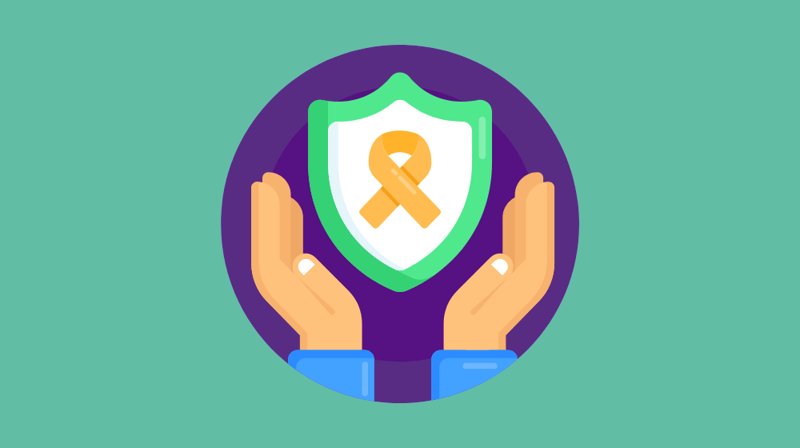How to Support Students Considering Self-Harm from a CARE Team Case Manager
Suicide is the second leading cause of death among young adults.
But fortunately, the top mental health conditions that lead to suicide ideation—depression and anxiety—are treatable. You do not need to be a mental health practitioner or suicide expert to support students considering self-harm. We can all learn a few ways to respond, support, and connect students to appropriate care.
Recently, I spoke with Courtney Vosamaer, a CARE Team case manager at Marquette University about how student affairs professionals can help prevent suicide on campus and support students who are struggling with suicide ideation.
Courtney and I talked about the unique mental health challenges brought on by the pandemic. She highlighted some warning signs that may indicate a student in crisis, discussed what professionals can do to proactively support students’ mental wellbeing, offered tips on responding to suicide ideation, and more.
Question: Can you tell me about your role on campus?
Courtney: I’m a social worker and have confidential privilege. I tell students that if they want to keep what they share confidential, I can. If the student would like me to share, they can sign a release form so I can work with other providers if needed. Many students may not realize that they need resources, but I am able to get them connected to the support they may need. If students, staff, or faculty have concerns about student safety, they can fill out an online care referral. Then I do proactive outreach to the student. Campus counselors can’t do proactive outreach to a student, but I am able to reach out to students before they connect with my office.
What challenges are you seeing students struggle with most upon returning to campus in person?
Courtney: I think it’s readjusting to all the external stimuli. That’s incredibly overwhelming to students who, prior to COVID, did not get overwhelmed easily but after being at home or being in their own apartment even last semester or residence hall by themselves, now you have the additional stimuli of going outside, sitting in a classroom. It sounds silly, but I’ve had students tell me that just physically picking up a pen and taking a quiz is so much to adjust to. It used to be everything’s online; I’m in my own apartment sitting in my cozy jammies. But now I must get out and engage. Because of that, social anxiety is raised.
Anxiety has been at an incredibly heightened level, and that’s the norm post-COVID. Students disassociated to get through what was going on in the world in 2020. With re-entry into life in-person, there’s less opportunity to disassociate because it’s all out from behind a screen now. It’s been interesting how students have re-entered.
What’s your advice for faculty or staff in working with a student who may be having suicidal ideations?
Courtney: It is okay to acknowledge that that’s what you’re sensing. You might say something like, “Hey, it sounds like you’re thinking about doing harm to yourself. Is that something that you’re thinking of?”
You don’t have to be the one to solve that, but you can be somebody that can connect. If they say they have been considering self-harm, you can ask “Do you have a plan to harm yourself?” If they say yes, it’s time to say, “It sounds like you could really benefit from talking with somebody about this because this probably feels really scary for you. If feels really scary for me to hear and I want to help you.”
Always remember what your counseling center staff or CARE team staff are trained for. I have found that many students are open to a crisis texting line because they can text a professional back and forth. And I’ve had students tell me that they utilize that more than the suicide lifeline because they don’t necessarily want to talk to somebody. But if they can text it, it’s more familiar.
What are things that professionals can do—during suicide awareness month (September) and all year round—to help prevent suicide on campus?
Courtney: Institutions should always be looking at things we can do environmentally—like signage, awareness programming, or public service announcements. Individually, it’s good to have conversations. You can tell your students you are available to check in. Ask them if they are doing okay. If they aren’t, you can let them know you can support them and connect them to resources.
If you start to see a pattern of a student not showing up, or looking a little more disheveled, or other patterns of behavior that show depression, you can make a CARE team or mental health counseling referral.
Could you tell us about the Marquette Red Folder?
Courtney: It’s a bright red folder to give faculty and staff that explains concerning or distressing patterns of behaviors in students. It gives some very concrete suggestions on what to look for. It also explains who you should refer students to depending on the needs. These include on-call counselors, the CARE Team, Advocacy Services, Title IX, and the campus police department.
It helps faculty and staff recognize and refer students to appropriate resources.
As a case manager, what do you wish every employee on campus would do to support the mental health and wellness of students?
Courtney: I think there’s a lot. I’m going to acknowledge that, in the pandemic, faculty and staff were really tested. What I’ve heard from some colleagues is that they didn’t realize how sick some of our students were until they were the only outlet that these students had. I think that if there was one thing they could do was realize that the student chose them for support.
If they come to you with something, recognize that you have basic tools to support. Just saying, “How are you? What’s going on? I’m here for you.” Realize that the student trusted you to make them a referral.
Most often, a student just wants someone to listen to them, and everyone on campus has the ability to listen and refer. I think that if everyone would just have a little bit of confidence in their own skills, that could make a big difference.
What are some warning signs that employees can watch for that someone may be considering suicide or self-harm?
Courtney: When students say comments like, “I shouldn’t be here,” “I don’t belong here,” or “Everyone would be better off without me,” connect with them and refer them to support services. If you start to notice somebody who has previously been very engaged but is now quiet and restrained, you could check in with them too.
Students also sometimes share distress in class writing assignments; these can all be signs that someone is struggling. It doesn’t always mean they are considering suicide but they are feeling a bit more removed.
If a student starts expressing goodbyes or that they are planning on hurting themselves, that is an alarming point. If they are at that point and posting on social media, saying goodbye to friends and family, or publicly expressing what the point is, it’s time for a referral to support.
Thank you so much for taking the time to talk with us today, Courtney.
What questions do you still have about student mental health and wellness? Connect with us on Twitter @themoderncampus.





